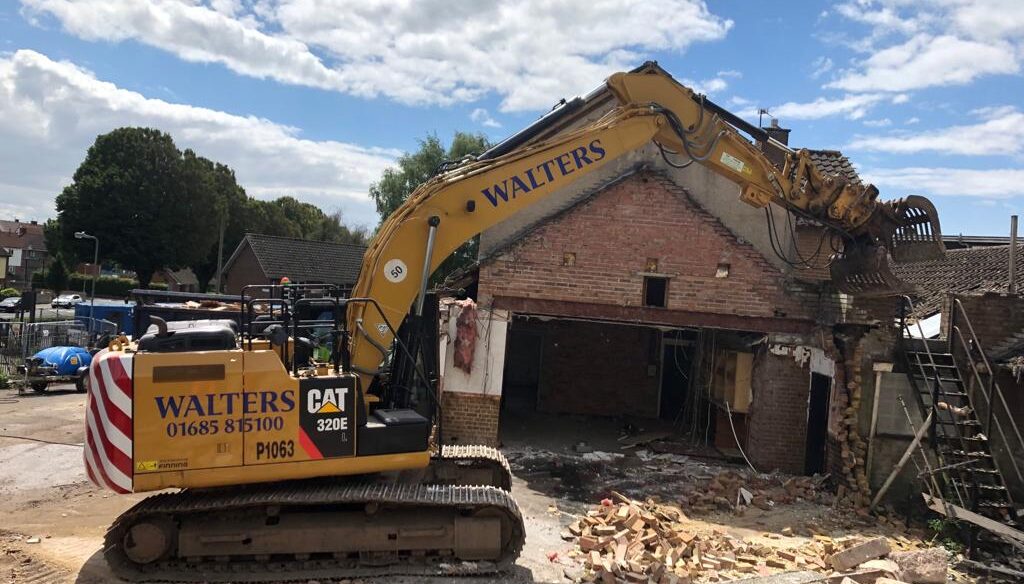
- DEMOLITION IN A CITY CENTRE
- WORKING UNDER A EUROPEAN PROTECTED SPECIES LICENSE
- LICENSED AND NON-LICENSED ASBESTOS REMOVAL
- SOFT STRIPPING
PROJECT OUTLINE
The former Bull Dog pub, previously run by Fairwater Rugby Club, had been operating in the Fairwater area of Cardiff since the 1960’s prior to its closure in 2015 when the club moved to a new facility nearby.
The site is situated in a densely populated suburb close to Cardiff City centre and is now owned by Cardiff Council. The decision was made to demolish the pub and redevelop the site for social housing as part of the local authority’s plans to build 2000 new homes.
Walters were called upon to undertake the demolition of the redundant building as enabling works for the redevelopment of the site.
PROJECT DELIVERY
Local interest in the scheme was high and former players and opponents were regular visitors to the boundary fence line during the works; some more pleased to see the building go than others!
Located immediately adjacent to a local secondary school and local shops, control of environmental nuisance factors was a key element of the project. Following the isolation of services, Walters undertook external soft stripping works under a European Protected Species Licence under the supervision of an licensed ecologist, to check for bats or potential bat roosts.
Walters removed licensed and non-licensed asbestos containing materials from inside and outside the building. Licensed asbestos material was present externally in soffit and fascia boards in various locations requiring extensive scaffold enclosures. Following asbestos removal, the building was soft stripped of all fixtures and fittings in order to prepare structural demolition.
A 20t demolition rig and a range of specialist hydraulic demolition attachments were mobilised to carefully dismantle the building in a controlled manner whilst ensuring that dust, noise and vibration were strictly controlled. Waste streams were segregated at source and placed into bin containers and removed to local recycling centres. Slabs, foundations and a basement were grubbed up to a depth of 3m and all hard arisings were removed from site by Walters own tipper wagons for recycling into aggregates.
Finally the site was reinstated and civilised to a high standard to allow on time Completion much to the satisfaction of Cardiff Council representatives.

